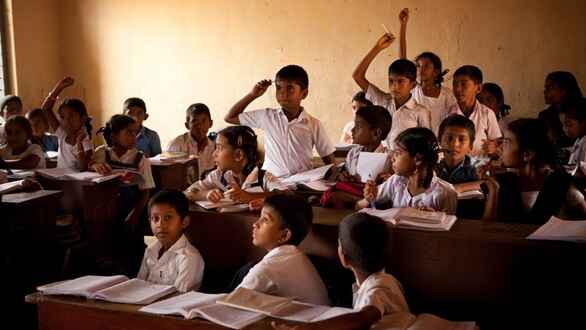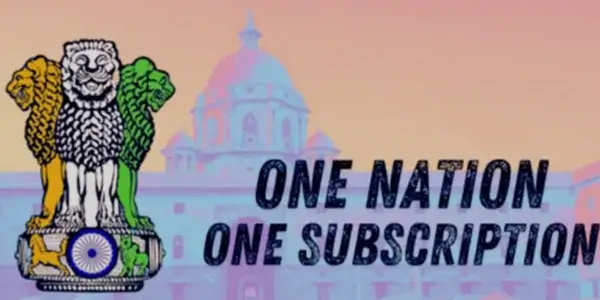Educated unemployment has become one of the most unusual and worrying challenges in India. It refers to a situation where people with degrees, diplomas, or professional qualifications are unable to find suitable jobs. Unlike general unemployment where a person lacks skills or education, educated unemployment exposes a mismatch between what the education system produces and what the job market actually needs. In recent years, especially with rapid technological adoption and changing industry demands, this problem has become even more visible and severe.
1. Overemphasis on Degrees, Not Skills

India’s education system has traditionally focused on acquiring degrees instead of developing practical skills. Millions of students still prefer popular courses like B.A., B.Com., B.Sc., engineering, and MBA, regardless of market demand. As a result, India produces a large number of graduates every year, but only a small percentage of them possess the skills that industries expect.
In 2025, companies across sectors including IT, manufacturing, fintech, and EV technology are asking for hands-on skills like data analytics, coding, robotics, digital marketing, and AI tools. But many graduates, even from top colleges, lack these competencies. This mismatch forces companies to offer jobs only to highly skilled candidates, leaving many degree-holders unemployed.
2. Rapid Technological Changes and Slow Curriculum Updates
The world is shifting towards automation, artificial intelligence, and digital processes at an extraordinary speed. However, India’s education system is slow in updating its curriculum. Many colleges still teach outdated subjects and old technologies. As industries adopt new tools and systems, graduates find themselves underprepared.
For example, while companies want AI developers, cloud engineers, and cybersecurity experts, many technical institutes still focus on outdated programming languages or theoretical knowledge. This delay in curriculum modernization widens the gap between education and employability, leading to a rise in educated unemployment.
3. Quality Gap Between Institutions
Another peculiar aspect of India’s unemployment problem is the huge difference in the quality of education across institutions. Only a small percentage of colleges provide high-quality training, experienced faculty, good infrastructure, and industry exposure. The majority of institutions, especially in Tier-II and Tier-III cities, struggle with outdated technology, limited practical training, and lack of placements.
As a result, graduates from top institutions get multiple job offers, while students from average colleges struggle for months or even years to find employment. This creates an unequal distribution of opportunities despite similar degrees.
4. Rising Aspirations but Limited Opportunities
In 2025, Indian youth have higher aspirations than ever before. They aim for stable, high-paying jobs in sectors like IT, banking, government services, and multinational companies. However, the number of such jobs is limited. Government job openings attract lakhs of applicants for just a few vacancies. Similarly, the private sector does not grow fast enough to absorb every qualified individual entering the job market each year.
As a result, many educated young people remain jobless simply because the demand for white-collar jobs is far lower than the supply of degree-holders.
5. Lack of Career Guidance and Awareness
Career counseling is still not a strong part of India’s school or college system. Many students choose courses due to parental pressure, peer influence, or lack of awareness about future job prospects. They often study subjects that do not match their interests or the industry’s needs. By the time they graduate, they realize their chosen field has limited career opportunities.
Proper guidance could help students choose skill-based courses, vocational training, or upcoming fields like renewable energy, EV maintenance, data science, and health tech—areas where job opportunities are increasing.
6. Urban-Rural Divide in Opportunities
Even in 2025, job opportunities are concentrated in metropolitan cities like Bengaluru, Mumbai, Delhi, Hyderabad, and Pune. Rural and semi-urban areas still lack industries, IT parks, start-up ecosystems, and innovation hubs. Educated youth from small towns often migrate to big cities in search of employment. However, the cost of living, increasing competition, and cultural adjustments make it difficult for many of them to find suitable jobs. This adds to the peculiar nature of educated unemployment in India.
7. Overdependence on Theoretical Education
India’s education system is heavily academic. Practical exposure, internships, apprenticeships, and project-based learning are still not widespread. Without real-world experience, even well-educated candidates find it challenging to meet employers’ expectations. Companies prefer candidates who have practical skills, not just theoretical knowledge.
Conclusion
Educated unemployment is a peculiar problem in India in 2025 because it arises from multiple interconnected issues—outdated curriculum, lack of skills, limited job opportunities, unequal quality of education, and a mismatch between aspirations and market needs. To overcome this challenge, India must strengthen skill-based education, modernize curricula, promote vocational training, expand industry-academia collaboration, and improve career counseling across schools and colleges.








